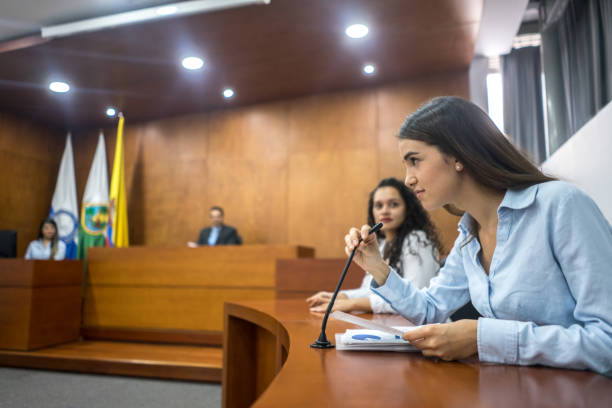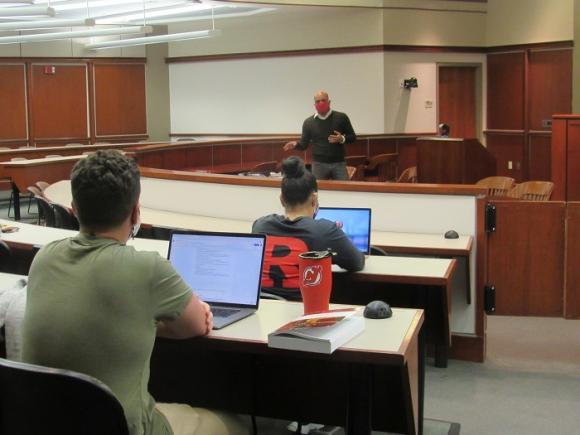From Principle to Court: Actions to Develop Effective and Persuading Trial Presentations
From Principle to Court: Actions to Develop Effective and Persuading Trial Presentations
Blog Article
Exactly How to Produce Involving Test Discussions That Gain Juries and Juries
Crafting compelling trial presentations that mesmerize juries and judges is a nuanced art that needs a critical strategy. From the careful consideration of the audience's expectations to the seamless integration of storytelling techniques, each element plays an essential function fit the outcome of a legal case - Trial Presentations. By employing innovative visual devices, including interactive components, and committing time to strenuous technique and wedding rehearsal, attorneys can substantially improve the effect of their courtroom presentations. The ability to involve and encourage through well-crafted discussions is an ability that can make all the distinction in winning over a jury or court, eventually tipping the scales of justice in one's favor.
Understanding Your Target Market
To efficiently involve your target market during test presentations, it is critical to comprehend their preferences, assumptions, and level of expertise in the subject issue. By tailoring your discussion to meet the details requirements of the target market, you can improve their understanding and retention of the details provided.
Begin by looking into the demographics of the audience, such as age, education and learning level, and profession. This information can assist you gauge their experience with lawful procedures and readjust your presentation style as necessary. A court might need simpler language and even more aesthetic help compared to a team of lawful professionals.
Moreover, think about the emotional and psychological elements of your target market. Are they considerate in the direction of certain disagreements or even more likely towards facts and evidence? Recognizing these subtleties can help you frame your presentation in such a way that reverberates with the target market on a deeper level.
Storytelling Methods
Comprehending your target market's choices and assumptions can considerably influence the efficiency of your test discussions, specifically when applying narration techniques to persuade and mesmerize. Storytelling is a powerful tool that can help attorneys get in touch with discretionary on a much more emotional level, making complex legal arguments more relatable and memorable.

Integrating brilliant details, personal anecdotes, and ornate devices can further boost the narration experience, maintaining the audience engaged and invested in the outcome of the case. By crafting a persuasive tale that reverberates with the values and emotions of the court and courts, attorneys can increase the opportunities of winning their debates and attaining positive decisions.
Visual Discussion Devices
Using visual discussion tools can greatly boost the effect and effectiveness of test discussions by giving an aesthetically appealing method to communicate complex information to courts and juries. Visual his explanation help such as charts, charts, animations, and representations can help streamline intricate information, making them more obtainable and reasonable to the target market. By integrating aesthetic elements right into test presentations, legal representatives can create a compelling story that resonates with jurors and leaves an enduring impression.

Incorporating Interactive Aspects
Including interactive elements into test presentations can enhance target market involvement and comprehension, promoting an extra interactive and immersive court experience. By incorporating components such as interactive timelines, 3D animations, clickable exhibitions, and online fact reconstructions, lawyers can astound judges and jurors, making complex info a lot more obtainable and memorable.
Interactive timelines enable a vibrant display screen of chronological events, helping the audience understand the sequence of crucial incidents in an instance. 3D computer animations can bring criminal activity scenes or crash reconstructions to life, offering a comprehensive visual representation that aids in clarifying elaborate details. Clickable exhibits enable users to interact with evidence, documents, or images, permitting for a hands-on expedition of essential details.
In addition, digital fact restorations can carry the audience into the heart of the action, giving an engaging point of view that traditional discussions might do not have. These interactive aspects not only involve the customers however also empower them to actively take part in the test proceedings, resulting in a more impactful and persuasive court presentation.
Method and Wedding Rehearsal
To efficiently leverage the potential of interactive components in test discussions, extensive method and rehearsal are crucial to guarantee seamless assimilation and distribution in the court setting. Technique and wedding rehearsal assistance trial speakers end up being familiar with the web content, timing, and flow of their presentations, permitting them to confidently navigate via different elements such as video clips, animations, or interactive graphics. By practicing their shipment, presenters can fine-tune their speaking abilities, body language, and total discussion style to improve persuasion and trustworthiness before the court and judge.
Throughout practice, speakers can identify any kind of technical concerns that may emerge with interactive aspects, ensuring that whatever runs smoothly throughout the real trial. In addition, rehearsing before a mock target market or colleagues can supply valuable comments on the performance of the interactive elements and the total presentation. This comments permits presenters to make necessary modifications and renovations before entering the courtroom, eventually raising the impact and success of their test discussions.
Conclusion
To conclude, developing engaging trial discussions that captivate juries and judges requires a deep understanding of the audience, efficient narration techniques, visual tools, interactive aspects, and thorough practice (Trial Presentations). By carrying out anonymous these approaches, attorneys can efficiently share their debates and proof in a compelling manner that resonates with the decision-makers in the court
Using aesthetic discussion devices can substantially enhance the impact and effectiveness of trial presentations by offering a visually appealing method to communicate intricate details to courts and courts. By integrating aesthetic aspects into trial presentations, attorneys can create a compelling narrative that resonates with jurors and leaves a lasting impression.
One preferred aesthetic discussion device is the use of multimedia presentations, which allow for the integration of videos, pictures, and audio recordings to supplement spoken debates. Trial Presentations.To properly utilize the capacity of interactive aspects in trial presentations, detailed technique and practice session are necessary to make sure seamless integration and distribution in the court room setting. Practice and practice session assistance trial presenters end up being acquainted with the material, timing, and flow of their presentations, allowing them to confidently navigate via different elements such as video clips, computer animations, or interactive graphics
Report this page